- The 2020 Jeep Gladiator sends a clear message to the competition.
- However, this is not the first time we have seen the Gladiator namesake.
- Join us for a brief walk through history, then an in-depth look at the 2020 Jeep Gladiator.
The debut of Miracle on 34th Street. Christian Dior’s “New Look” for women. The Doomsday Clock. Chuck Yeager flies faster than sound and David Bowie is born. 1947 was a year of firsts. On the automotive front, Army veteran John C. Hennessy Jr. brings the first Volkswagen Beetle to the United States after purchasing it from the U.S. Army Post Exchange in Frankfurt, Germany. That same year, the Ferrari 125 S, with its V12 engine, becomes the first car to bear Enzo’s name.
And Willys Overland introduced a one-ton truck with four-wheel drive based on the CJ-2A.
They say history repeats itself. They say the more things change, the more they stay the same. That’s true if we consider the 2020 Jeep Gladiator. In fact, this isn’t the first time the Gladiator has stepped in the arena.
The Warrior Emerges
In his book, Jeep: The History of America’s Greatest Vehicle, Patrick R. Foster details how, by the fourth quarter of 1962, Jeep’s new line of wagons and pickups were selling like hotcakes. The Wagoneer and the Gladiator were firsts for the automotive world, with the Gladiator becoming, in Foster’s words, a “handsome brute of a pickup truck that would bring Jeep into direct competition with the Big Three makers.”
Consider the current Chevy Colorado and GMC Canyon; the Honda Ridgeline and Toyota Tacoma, and the return of the Ford Ranger. With the Gladiator, Jeep is again putting the competition in their crosshairs. As they say, the more things change, the more they stay the same.
Jeep of All Trades
The Wagoneer’s styling, conceived by then Willys Styling head Jim Angers, made it appear larger than it really was. Arguably, the Wagoneer was a percursor to today’s modern crossover. The Gladiator shared the same engineering DNA and options were plentiful. Buyers could select from 1/2, 3/4, or one-ton configurations in either two or four-wheel drive. Body styles included Thriftside, Townside, Platform Stake, or cab and chassis; there were two wheelbases (120 and 126-inch) and a bed length of either seven or eight feet.
Power steering, power brakes, and a GVWR up to 8,600 lbs. – indeed, the Gladiator of the 1960s was an impressive machine. And by all accounts the 2020 Jeep Gladiator is an impressive machine too. But to what degree? Let’s break it down with an in-depth look.
Styling & Design: History Meets Performance
The design team sought to balance a storied history with modern performance. For example, the Gladiator has Jeep’s distinctive seven-slot grille, each “slot” representing one of the world’s seven continents. Every Jeep of every type has this grille, paying homage to Jeep’s capability on all seven continents.
However, as far as the 2020 Gladiator is concerned, the slots become wider to increase air intake, while the top is swept back slightly in the interest of aerodynamics.
Body & Chassis: Longer & Lighter
Body-on-frame design here, and probably not surprising considering what we are looking at. In general, the body and chassis play a major role in a vehicle’s safety, fuel economy, ride and handling and, in this case, off-road ability. Jeep enthusiasts want a solid foundation under them – why else drive a Jeep? So the 2020 Gladiator needs to ace this test, but how?
Out of the gate, engineers went for a light and rigid high-strength steel frame. Keep in mind, trucks are trucks and Jeeps are Jeeps, but this is a Jeep truck. Thus, some modification was necessary.
Take the Jeep Wrangler 4-door, for example. By comparison, Gladiator’s frame is 31 inches longer while the wheelbase is 19.4 inches longer. Yet, the longer wheelbase and the bed’s positioning relative to the rear axle make for better weight distribution. This also facilitates a more comfortable ride when towing or hauling cargo, according to Jeep. Furthermore, the prop shaft, brake and fuel lines, and the exhaust system were lengthened to accommodate the new architecture.
Elsewhere, the 2020 Jeep Gladiator employs high-strength aluminum for the doors, door hinges, hood, fender flares, windshield frame, tailgate, and engine mounts.
Keep in mind, trucks are trucks and Jeeps are Jeeps, but this is a Jeep truck. Thus, some modification was necessary.
Click To Tweet
Body & Chassis: Protection Is Key, Convenience Too
Even a Jeep truck will do Jeep things, meaning underbody protection is paramount. Slide under on the mechanic’s creeper and notice Gladiator’s four robust skid plates and bars to protect the fuel tank, transfer case, and transmission oil pan. Rubicon models go further, employing heavy gauge tubular steel rock rails.
Moving then to the five-foot bed, there are four steel cross-members to reinforce the load floor.
In-bed tie-downs and lighting, and an optional external power source help with cargo hauling. Spray-in bed liners, bed dividers, and tonneau covers are also available. Finally, the power-locking tailgate can stop in three different positions.
Suspension Setup: It’s A Jeep Thing
One complaint is how Jeeps ride like noisy lumber wagons. And the response is, appropriately enough, “duh, it’s a Jeep. It’s supposed to be rugged.” However, Jeep’s engineers worked to soften the ride and lower cabin noise for those longer road trips.
As far as brick and mortar components, they make sense for a Jeep truck. The five-link coil suspension has the front employing a lateral control arm and four longitudinal control arms. Full-width, forged steel track bars control lateral movement of the axle, with minimal angle change, during suspension travel. The rear five-link coil suspension features two upper and two lower forged steel control arms for longitudinal control. Similar to the front, the rear track bar provides lateral support.
The rear control arms are located under of the frame rails, while the rear shocks are forward facing. This provides consistent damping for ride comfort, especially when traveling with a payload. Interestingly enough, no other Jeep but the new Gladiator employs this type of rear suspension design.
Overall, Jeep says they went for an optimum balance between off-road handling in the sticks and comfort for those Sunday drives. Engineers, however, paid special attention to the shock tuning, hard points, and body mounts.
Off-Road Prowess: Duh, It’s A Jeep
Whatever does one do with a Jeep? If you said something about off-roading, a chicken dinner is in your future. As sure as Reese’s will honor peanut butter and the Yankees their pinstripes, Jeep – even a Jeep truck – will honor the off-road.
The 2020 Jeep Gladiator provides two 4×4 systems. The Command-Trac 4×4 system (Sport and Overland) has a two-speed transfer case with a 2.72:1 low-range gear ratio, and heavy-duty Dana 44 front and rear axles with a 3.73 rear axle ratio. On Gladiator Rubicon, a Rock-Trac 4×4 system features Dana 44 front and rear axles with a “4LO” ratio of 4:1. The 4.10 front and rear axle ratio is bolstered by Tru-Lok locking differentials.
Both Command-Trac and Rock-Trac systems offer full-time torque management for low-traction situations. An available Trac-Lok limited-slip rear differential on Sport and Overland provides extra torque and grip when driving over sand, gravel, and snow. Gladiator Rubicons go a bit farther, offering an electronic sway-bar disconnect and 33-inch tires. Crawl ratios for the Gladiator Rubicon come in at 84.2:1 with the manual transmission and 77.2:1 with the automatic.
When the trip goes way off-road, the 2020 Jeep Gladiator provides 30 inches of water fording. Gladiator’s approach angle is 43.6 degrees; breakover angle 20.3 degrees; departure angle 26 degrees, with a ground clearance in excess of 11 inches. Bring on the weekend!
As sure as Reese's will honor peanut butter and the Yankees their pinstripes, Jeep will honor the off-road.
Click To Tweet
Engine & Powertrain: Big Diesel Power
FCA’s multi-platform engine, the 3.6-liter Pentastar V6, is standard fare for the 2020 Jeep Gladiator. The Pentastar delivers a respectable 285 horsepower, 260 lb-ft. of torque, and offers a generous power band. However, the 3.0-liter EcoDiesel is a better option for those who want more low end. Available starting in 2020, the EcoDiesel cranks out 442 lb-ft. of torque and 260 horsepower.
The EcoDiesel’s power emanates from the on-board turbo and its low-friction bearings.
An eight-speed automatic is standard for the EcoDiesel and optional for the Pentastar V6. With two overdrive ratios to improve highway fuel economy and reduce NVH, the eight-speed automatic will likely be the top choice. However, a six-speed manual is available for the Pentastar V6, with gear ratios set for crawl performance.
When properly equipped, the 2020 Jeep Gladiator tows 7,650 lbs. with a payload capacity of 1,600 lbs.
Other Cool Stuff
- More than 80 active and passive safety and security features are available.
- A four-bolt design at the top of the windshield’s frame allows it to fold down.
- All Gladiators feature body-color sport bars with grab handles for front occupants.
- The shifter, grab handles, and the infotainment screen’s frame are accented by real bolts.
- The full-size spare tire and mount is located under the bed and can hold up to a 35-inch tire.
- A tool kit with the necessary Torx bits to remove the doors and lower the windshield is included.
- Cloth or leather-contoured seats feature accent stitching and adjustable bolster and lumbar support.
- Gladiator Rubicon has a forward-facing off-road camera nestled between the front grille’s middle slot.
Availability & In Person
The 2020 Jeep Gladiator is on display at the LA Auto Show, now through December 9th at the Los Angeles Convention Center. When it arrives in the second quarter of next year, the Gladiator will come in Sport, Sport S, Overland, and Rubicon trims. In addition, Mopar will offer over 200 performance parts and accessories for the new Gladiator.
Production will commence at the Toledo Assembly Complex in Toledo, Ohio, Jeep’s manufacturing home since 1941.
Carl Anthony is Managing Editor of Automoblog and resides in Detroit, Michigan. He studies mechanical engineering at Wayne State University, serves on the Board of Directors for the Ally Jolie Baldwin Foundation, and is a loyal Detroit Lions fan.
2020 Jeep Gladiator Rubicon Gallery







































2020 Jeep Gladiator Overland Gallery









Jeep Gladiator Interior Gallery















Photos & Source: FCA US LLC.
Source: Jeep: The History of America’s Greatest Vehicle, Patrick R. Foster, 2014 Quarto Publishing Group USA.
https://www.automoblog.net/2018/12/05/2020-jeep-gladiator/
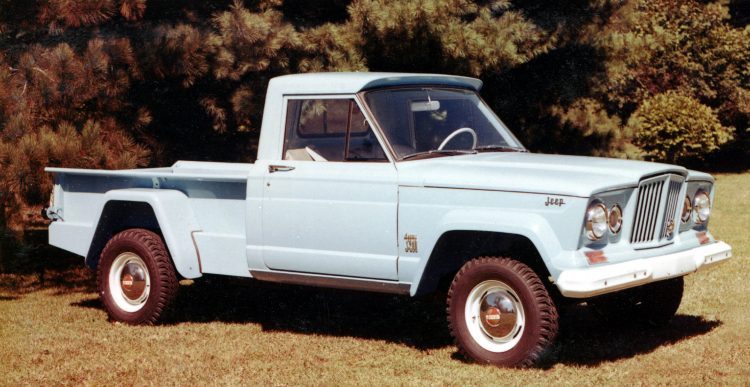
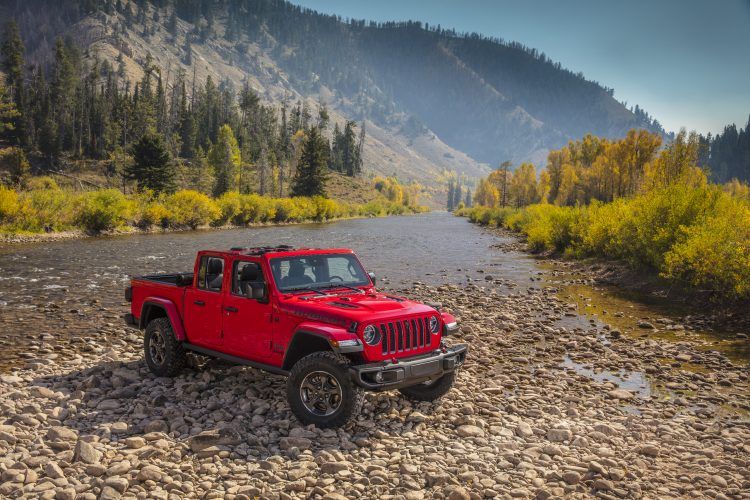
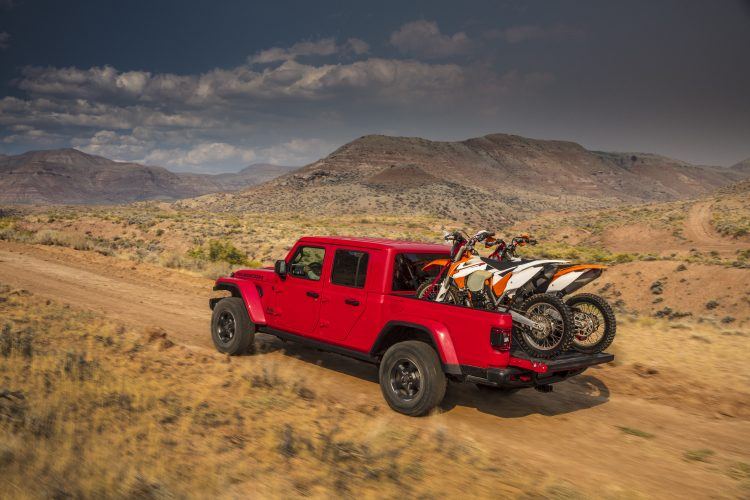
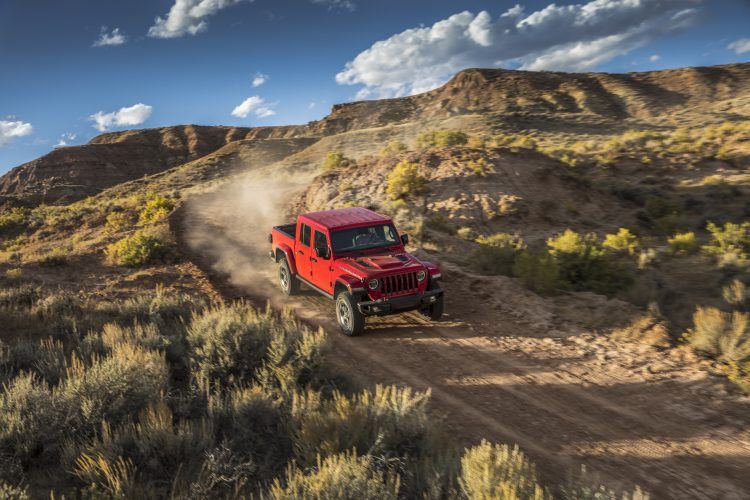
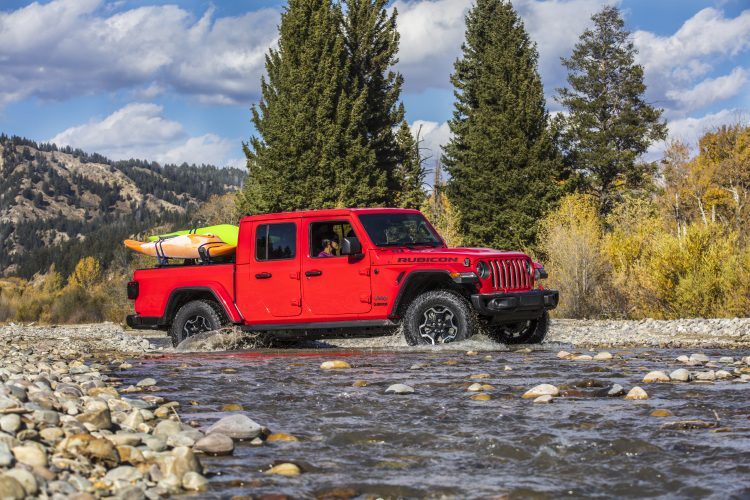
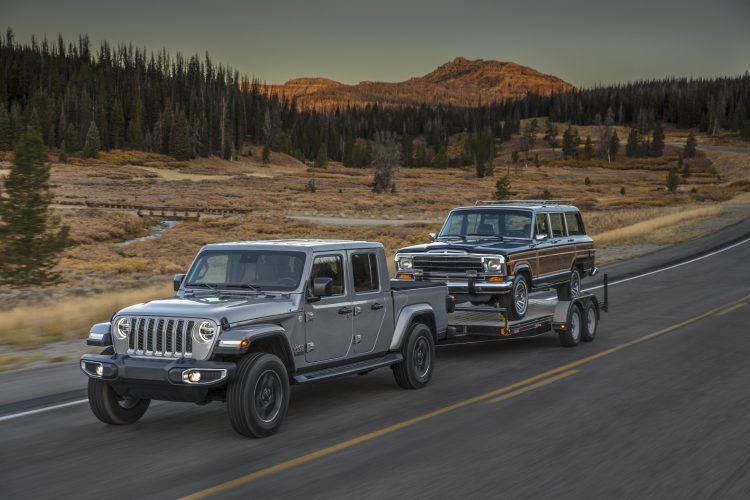
No comments:
Post a Comment